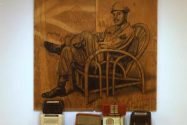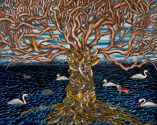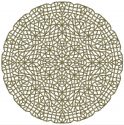Gene Koss: Sunrise
Gene Koss blends simple process with advanced fabrication techniques to create glass sculptures that reveal the constant inspiration provided by the rural landscapes of his youth and life. The internationally known artist’s vision remains profoundly humanist, yet this recent work presents an intentional rawness. Several of the works in this exhibition incorporate found object pieces that have been woven in with the artist’s own dialogue. The work ranges in scale from large cast glass and steel sculptures to smaller blocks dubbed “glass drawings.”








